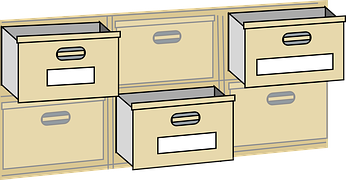Are your chart of accounts giving you the information you need to grow your business?
Setting up a chart of accounts for your business is one of the first tasks you will be required to do when subscribing to an accounting system whether you do your accounts manually (eg: excel), programmed packages (Xero, MYOB, Quickbooks) or custom made accounting packages. It is essentially the core of your online filing cabinet for your business finances.
What is the chart of accounts?
The chart of accounts are the foundation level that every transaction in your accounting system is coded to. It is the backbone of your accounting system and believe it or not, it organises your business finances by giving all transactions a category. Transactions are separated into expenditure, revenue, assets and liabilities in order to give parties such as business owners, shareholders, accountants, committees and boards a better understanding of the financial health of the entity.
One of the first things I check in any business is the chart of accounts. It gives me a good overview for how the business operates before I start reconciling transactions.
A business needs to know where the money is coming from and where it is going.
For example, how many revenue centres has your business got? A landscape gardener who does garden maintenance may want different accounts so he can gauge what he earns from landscape projects and general garden maintenance.
If you are just starting out, grab a pen and paper and jot down how you want your business to make revenue and what expenses you think you will have and then categorize them into small groups. Your bookkeeper or accountant can then tailor your chart of accounts especially for your business.
How the chart of accounts helps your business
A well designed chart of accounts will allow you to extract meaningful reports that will allow you to put your own business under the microscope. You can review which divisions are doing well, which sections have higher percentage of COGS compared to others and where you can streamline operating costs.
This information will give your business an edge, make you competitive and give you the information you need to improve, make changes and grow your business. At the end of the day, figures do not lie.
Can the chart of accounts be changed?
Yes of course! Whether you have an existing data file or are just starting out, accounting packages such as Xero, MYOB and Quickbooks all offer standard chart of accounts to work with depending on your industry and all can be tailored to your business.
We all know every business is unique.
This month one of my clients set up a new Chart of Accounts in hospitality and we needed to add items such as Restaurant Consumables and DJ Contractors. These are accounts you would not see in a landscaping business but you would find Tool Consumables and Protective Clothing. But you wouldn’t find either of those in my bookkeeping business!
How can you review your chart of accounts?
Speak to your bookkeeper to check you have the chart of accounts working for your business properly. Write down what you want your Profit and Loss to tell you when you look at it. Design your chart of accounts on what you need not what was programmed!
The chart of accounts is also the default for the coding of GST on your transactions. To make sure you are compliant for tax purposes, ask your bookkeeper or accountant to check the GST code allocated to the account codes.
